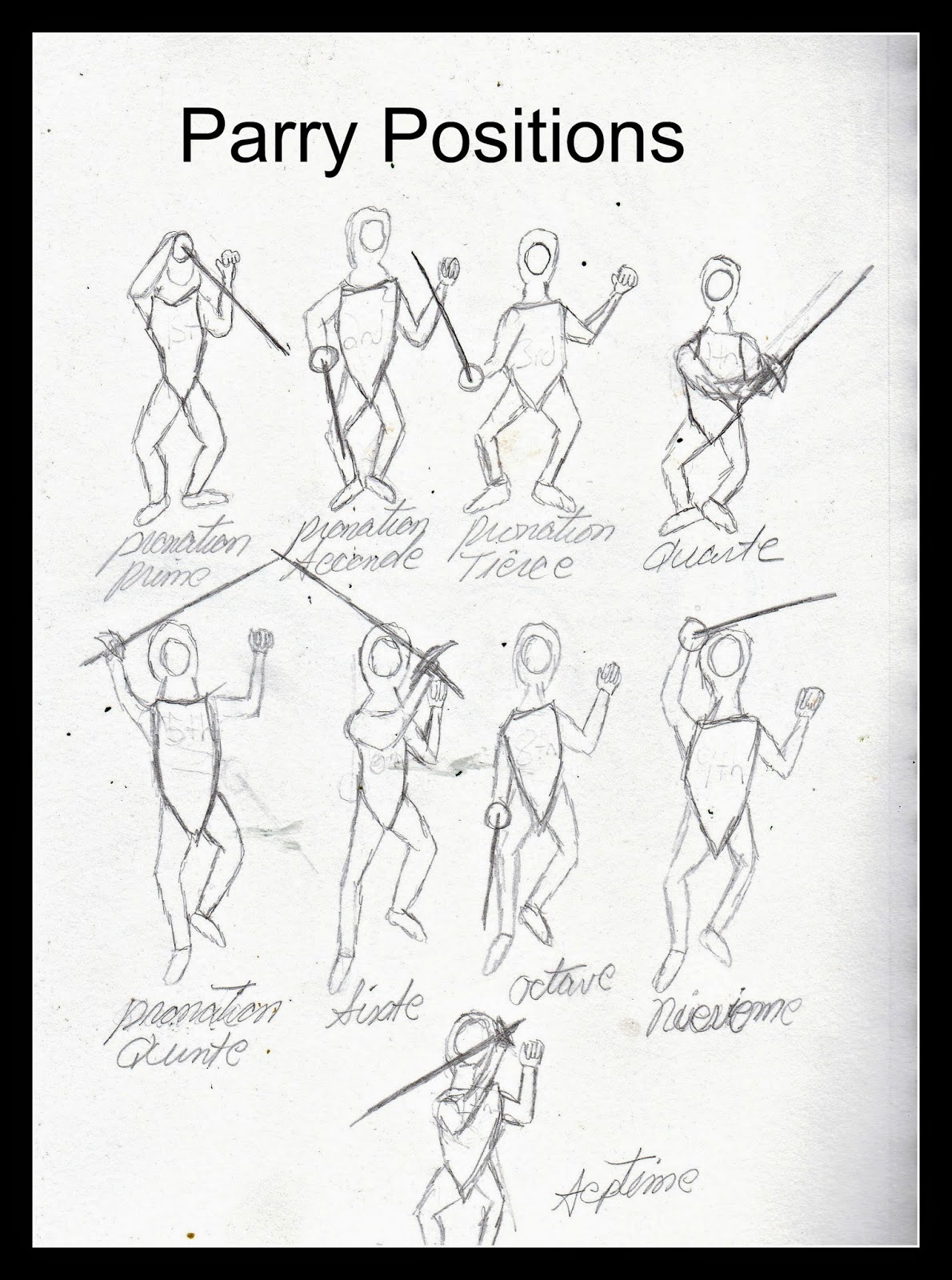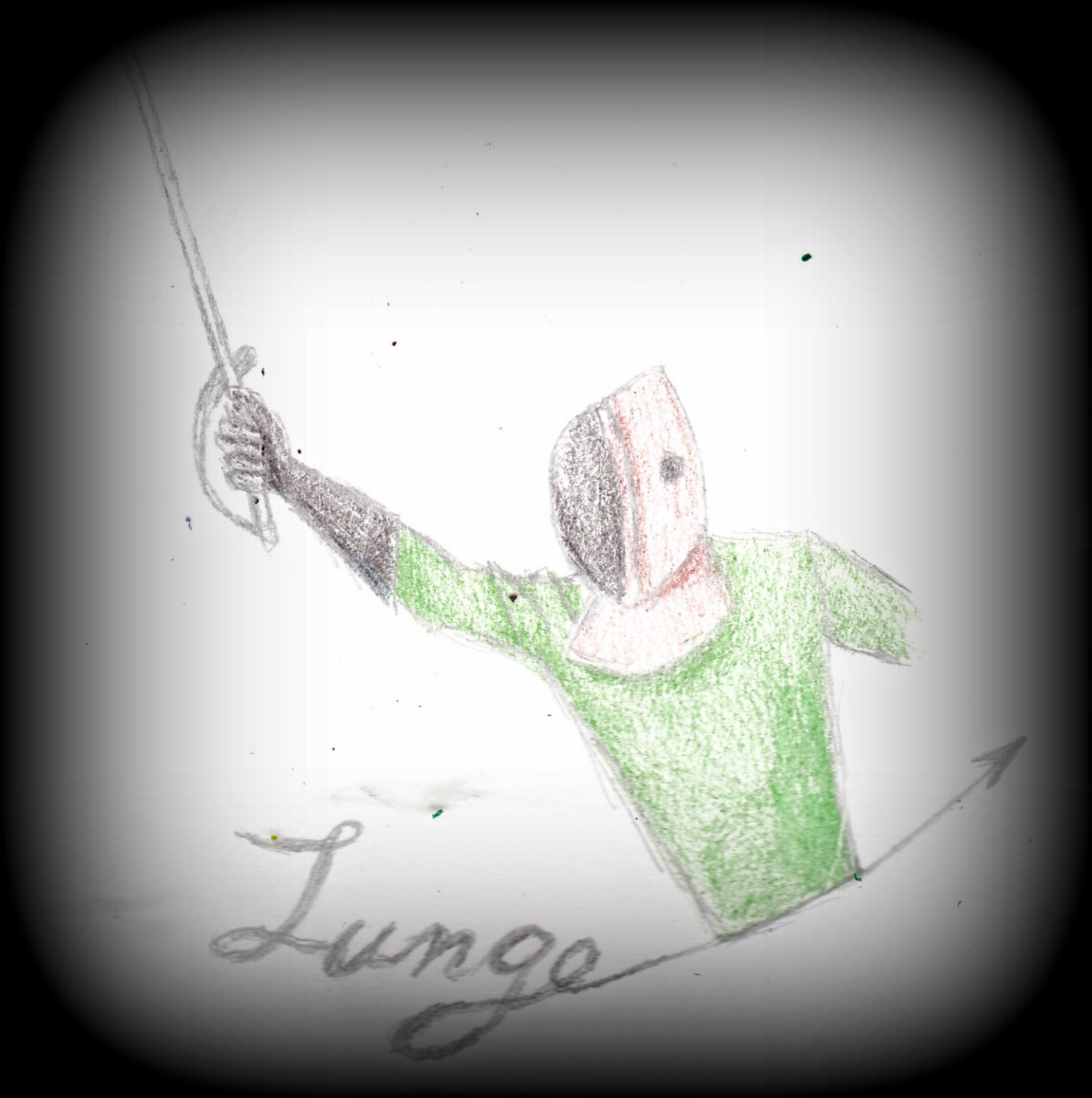The Parry is important for defending
against attacks and offers an opportunity to counter attack. Without learning
parries it will be difficult to effectively compete in fencing. Your body will
be generally open to seasoned fencers. Practicing defending against attacks
using multiple parries is important for creating the highest levels of
competitive skill.
The most common parries used are Parry of Four, Parry of Six, Parry of Seven, and Parry of Eight (1). They are designed to protect your right side, left side, lower stomach, middle of your stomach. They are parries designed to cover the core areas of your body and help you defend against the majority of fencing attacks.
Prime: Stops a cut to the chest.
The most common parries used are Parry of Four, Parry of Six, Parry of Seven, and Parry of Eight (1). They are designed to protect your right side, left side, lower stomach, middle of your stomach. They are parries designed to cover the core areas of your body and help you defend against the majority of fencing attacks.
Prime: Stops a cut to the chest.
Seconde: Stops a low cut to the flank
Tierce: Stops high cut to the flank
Quarte: Stops high cut to the chest.
Quinte: Stops cut to head.
Sixte: Stops cut to head.
Septime: Stops cut to back.
Octave: Stops cut to flank.
Neuvieme: Protects Back
Neuvieme: Protects Back
Michigan State University has a pretty good fencing illustration that is completed in pictures which is better than the drawings here. The pictures are fairly ancient and in black and white but still provide the basic moves.

